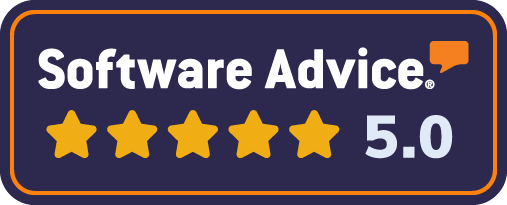At Emplibot, we’ve seen the rapid evolution of AI agents in cryptocurrency trading. These intelligent systems are revolutionizing how traders approach the volatile crypto markets.
AI agents can analyze vast amounts of data, execute trades at lightning speed, and adapt to changing market conditions. In this post, we’ll explore how you can harness the power of AI to enhance your crypto trading strategy.
Contents
ToggleWhat Are AI Agents in Crypto Trading?
Definition and Core Functionalities
AI agents in cryptocurrency trading are sophisticated software programs that use artificial intelligence to analyze market data, make predictions, and execute trades automatically. These agents use machine learning algorithms to process vast amounts of information, including price movements, trading volumes, and market sentiment.
The Power of AI in Crypto Markets
AI agents have transformed the cryptocurrency trading landscape. They analyze market trends and execute trades faster than any human trader. AI is revolutionizing crypto trading with faster analysis, smarter execution, and better risk management.
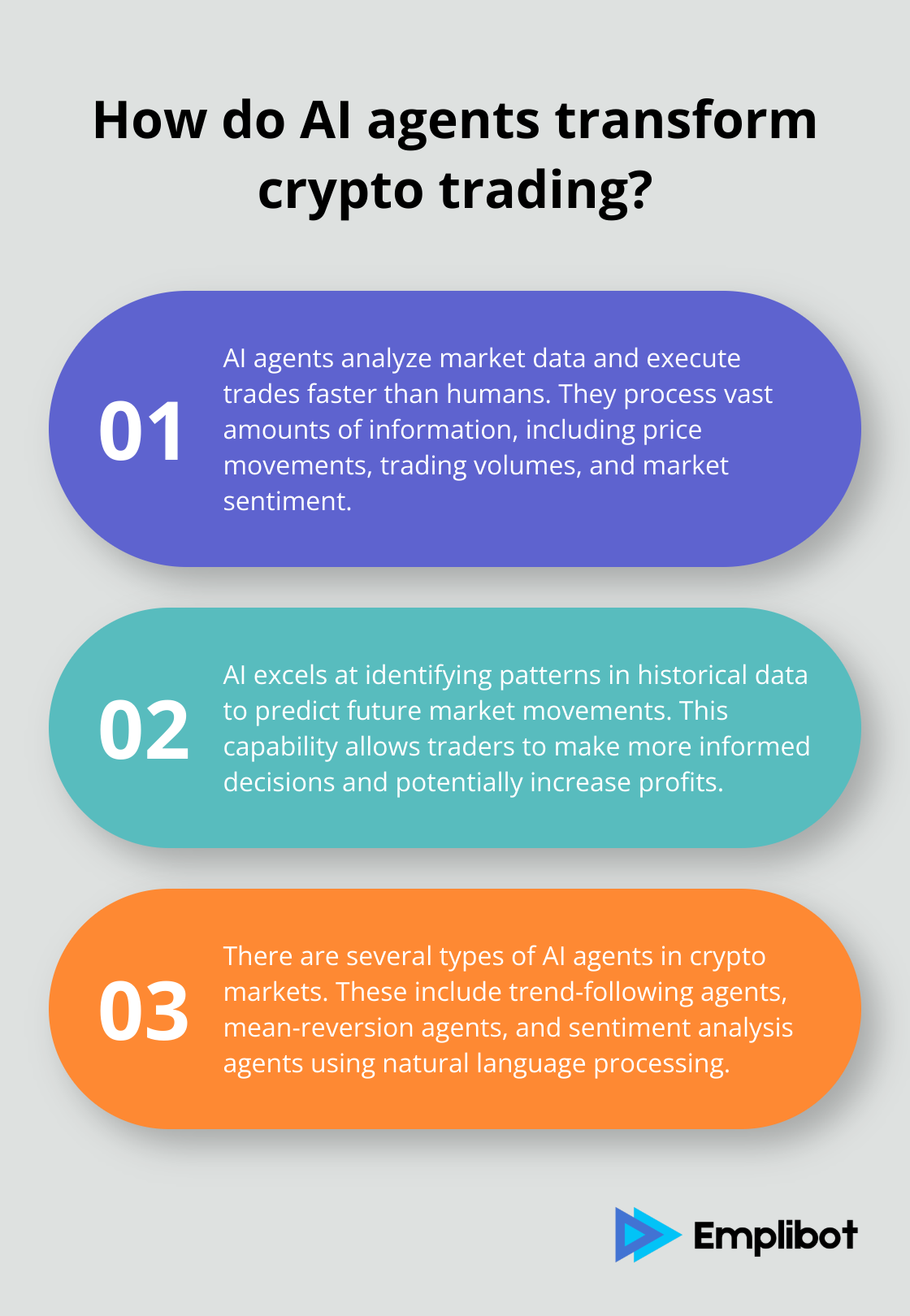
AI agents excel at identifying patterns in historical data and using these insights to predict future market movements. This capability allows traders to make more informed decisions and potentially increase their profits.
Types of AI Agents
Several types of AI agents operate in cryptocurrency markets:
- Trend-following agents: These use machine learning to identify and capitalize on market trends.
- Mean-reversion agents: They look for price deviations from historical averages and trade accordingly.
- Sentiment analysis agents: These use natural language processing to gauge market sentiment from news articles and social media posts.
AI vs. Traditional Trading Methods
AI-powered trading offers several advantages over traditional methods:
- 24/7 Operation: AI agents never miss a trading opportunity.
- Emotional Neutrality: They’re free from emotional biases that often plague human traders.
- Efficiency: Automated trading can offer advantages over manual trading, depending on your strategy.
- Multi-market Analysis: AI agents can simultaneously analyze multiple cryptocurrencies and markets (something that’s practically impossible for human traders).
This multi-market analysis allows for more diversified trading strategies and potentially higher returns.
Limitations and Considerations
While AI agents offer significant advantages, they aren’t infallible. They require careful setup, monitoring, and periodic adjustments to ensure optimal performance. Traders must understand the underlying algorithms and market conditions to effectively leverage these powerful tools.
In the next section, we’ll explore the key components that make up successful AI trading systems (including data collection, algorithm selection, and risk management strategies).
Building a Robust AI Trading System
The Foundation: Quality Data
High-quality, comprehensive data forms the backbone of any AI trading system. Your AI agent needs access to real-time and historical price data, trading volumes, order book information, and market indicators from multiple exchanges. A study by QuantInsti reveals that 80% of a data scientist’s time in algorithmic trading is spent on data collection and preparation.
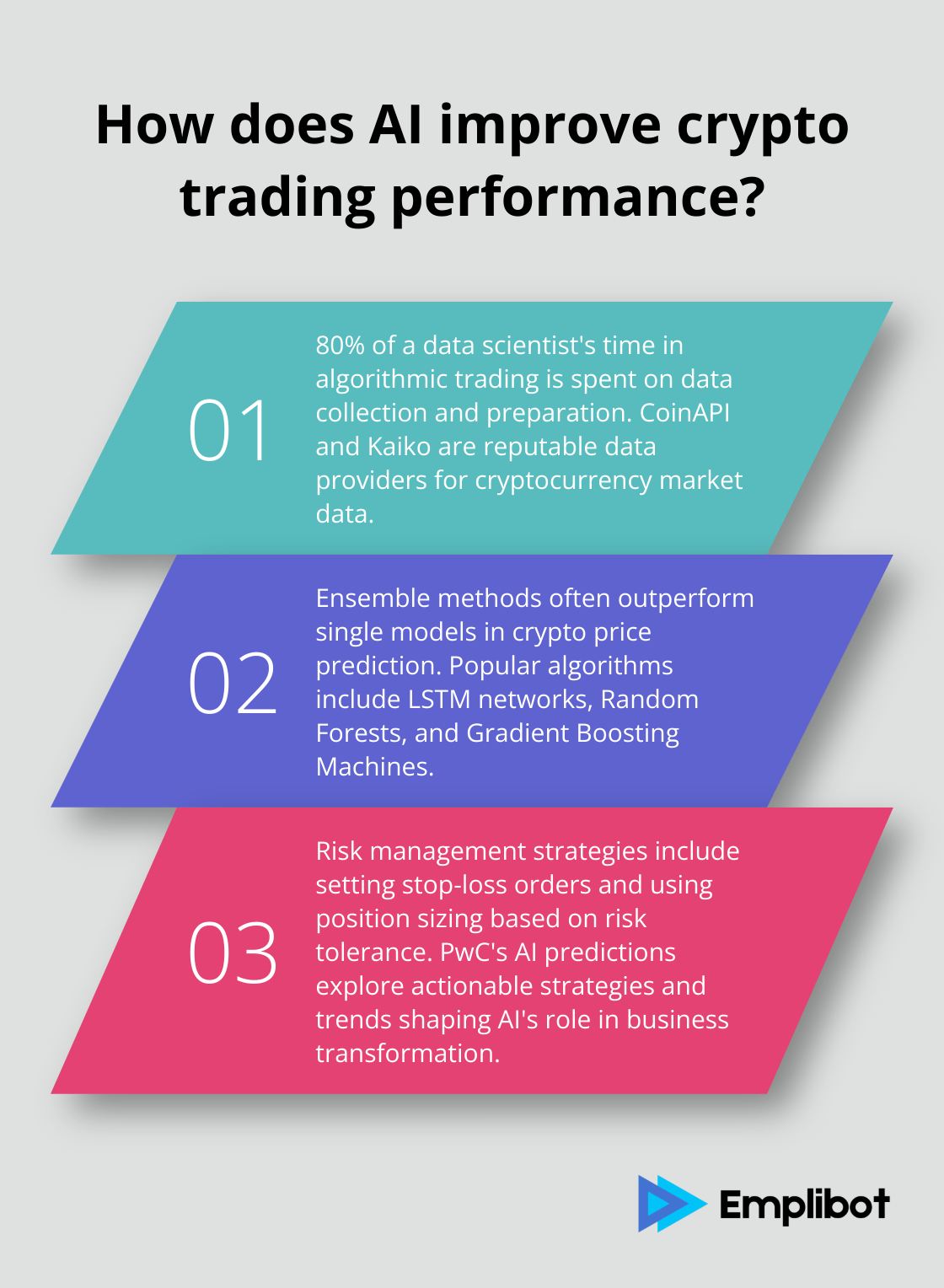
CoinAPI and Kaiko stand out as reputable data providers for cryptocurrency market data. These services offer clean, normalized data that can save you countless hours of preprocessing. Factor in data fees when calculating your trading strategy’s overall cost.
Selecting Effective Machine Learning Algorithms
The choice of appropriate machine learning algorithms is vital for accurate market analysis. Popular options include:
- Long Short-Term Memory (LSTM) networks for time series prediction
- Random Forests for feature importance and price prediction
- Gradient Boosting Machines for classification tasks
A study in the Journal of Big Data found that ensemble methods (combining multiple algorithms) often outperform single models in crypto price prediction. Try to start with a simple model and gradually increase complexity as you gain more insights into your data and trading strategy.
Risk Management Strategies
Risk management is a non-negotiable aspect of AI trading. Even the most sophisticated AI can’t predict black swan events or sudden market shifts. Implement these risk management strategies:
- Set stop-loss orders to limit potential losses
- Use position sizing based on your risk tolerance (typically 1-2% of your portfolio per trade)
- Diversify your crypto holdings to spread risk
PwC’s AI predictions explore actionable strategies, industry insights, and trends shaping AI’s role in business transformation for 2025 and beyond. It’s essential to regularly review and adjust your risk parameters as market conditions change.
Thorough Backtesting and Performance Evaluation
Before deploying your AI trading system, conduct thorough backtesting. Use historical data to simulate how your strategy would have performed in past market conditions. Key performance metrics to track include:
- Sharpe Ratio (risk-adjusted return)
- Maximum Drawdown (largest peak-to-trough decline)
- Win Rate (percentage of profitable trades)
The advantage of AI compared to traditional asset and risk management techniques is the ability to feed data to prediction algorithms that continuously improve. Platforms like QuantConnect or Backtrader (two popular choices among traders) offer comprehensive backtesting capabilities.
Past performance doesn’t guarantee future results. Monitor your AI system’s live performance continuously and be prepared to make adjustments as needed.
The next section will guide you through the practical steps of implementing these AI agents into your trading strategy, ensuring you can leverage these powerful tools effectively in the dynamic world of cryptocurrency trading.
How to Implement AI Agents in Your Crypto Trading
AI agents in cryptocurrency are transforming the cryptocurrency landscape by providing advanced tools and strategies that enhance trading efficiency and security. Here’s how to start using these powerful tools effectively.
Choose the Right AI Trading Platform
Selecting an appropriate AI trading platform is essential. Popular options include Trality and Cryptohopper. Trality allows users to transform their trading ideas quickly and easily into a profitable strategy using professional-grade tools. Cryptohopper is known for its user-friendly interface and extensive range of technical indicators.
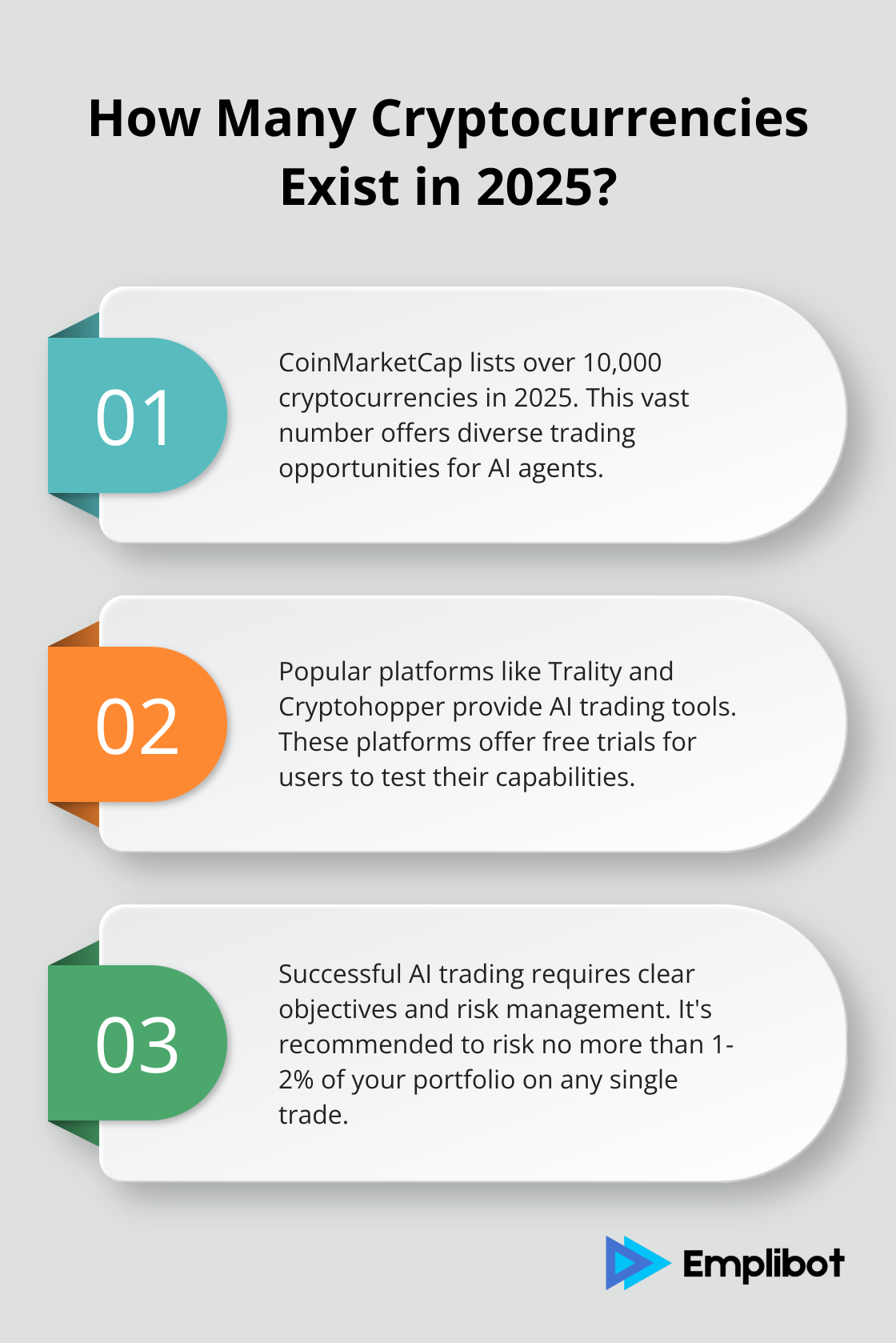
QuantConnect offers a powerful platform for developing and backtesting AI trading strategies. It supports multiple programming languages and provides access to vast amounts of historical data.
When selecting a platform, consider factors like ease of use, available features, supported exchanges, and pricing. Many platforms offer free trials (take advantage of these to test their capabilities before committing).
Configure Your AI Agent
After choosing a platform, set up your AI agent. Define clear trading objectives. Determine if you aim for high-frequency trading or longer-term positions. Assess your risk tolerance. These factors will guide your agent’s configuration.
Select the cryptocurrencies you want to trade. While Bitcoin and Ethereum are popular choices, include some altcoins for diversification. As of March 2025, CoinMarketCap lists over 10,000 cryptocurrencies to choose from.
Program your trading rules. For no-code platforms, this might involve selecting from pre-built strategies. For coded solutions, implement your algorithms. Common strategies include trend following, mean reversion, and sentiment analysis.
Set appropriate risk management parameters. This includes stop-loss orders, position sizing rules, and maximum drawdown limits. A common rule of thumb is to risk no more than 1-2% of your portfolio on any single trade.
Monitor and Fine-tune Your AI Agent
Launching your AI agent marks the beginning of the process, not the end. Continuous monitoring and adjustment are key to long-term success.
Set up alerts to notify you of significant events (large trades or unusual market movements). Regularly review your agent’s performance metrics, including win rate, profit factor, and Sharpe ratio.
Adjust your strategy based on changing market conditions. Crypto markets are notoriously volatile, and what works today might not work tomorrow. According to a report by PwC, successful AI implementations in finance require ongoing maintenance and updates to remain effective.
Try running multiple AI agents with different strategies to spread your risk. This approach, known as ensemble trading, can lead to more stable returns over time.
AI can process vast amounts of data and execute trades faster than any human, but it’s not infallible. Always maintain a level of human oversight and be ready to intervene if necessary. The most successful crypto traders blend the power of AI with human intuition and experience.
Final Thoughts
AI agents have transformed cryptocurrency trading with their speed, efficiency, and data analysis capabilities. These intelligent systems enhance trading strategies, manage risks, and capitalize on market opportunities human traders might miss. Traders must stay informed about new technologies, regulations, and market dynamics to adjust their AI agents effectively.
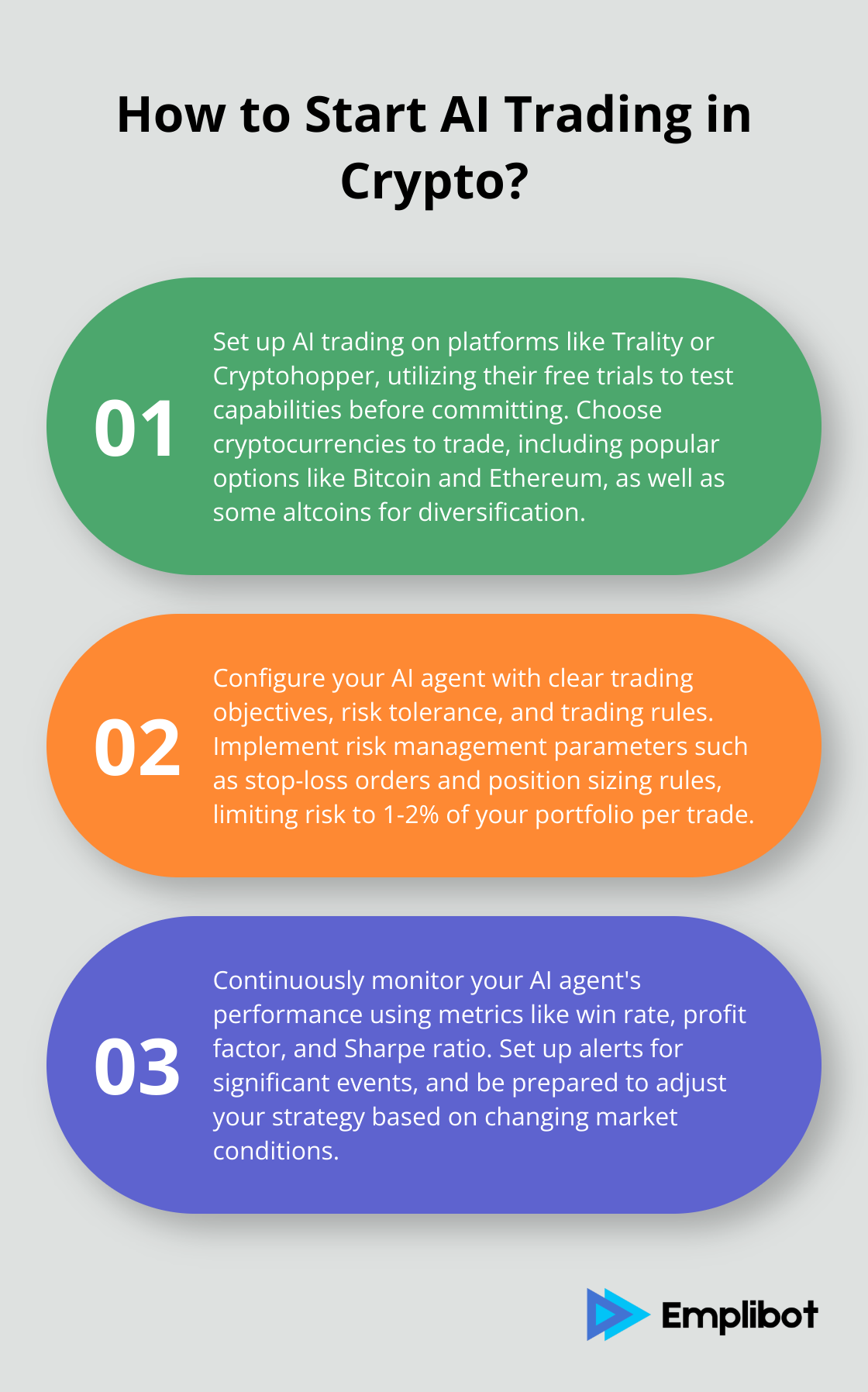
The future of AI-driven cryptocurrency trading looks promising. We expect more sophisticated trading algorithms, improved predictive capabilities, and enhanced risk management tools. The integration of AI with blockchain and quantum computing may open up new possibilities for crypto trading (beyond our current imagination).
Human oversight and strategic thinking remain crucial components of successful trading strategies. For businesses looking to leverage AI in their content marketing efforts, Emplibot offers an innovative solution to automate content creation and distribution across various platforms. This AI-powered tool exemplifies how artificial intelligence can streamline operations and drive growth in digital marketing.






![Will AI Kill Blogging? [What You Need To Do Today]](https://wp.emplibot.com/wp-content/uploads/emplibot/ai-kills-blogging-1751008068-768x456.jpeg)



